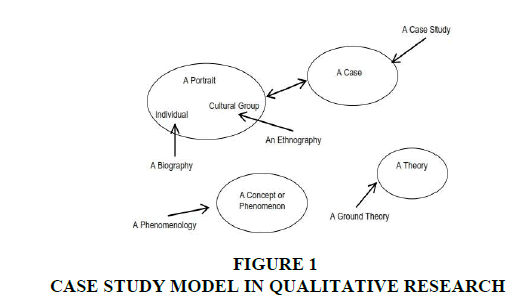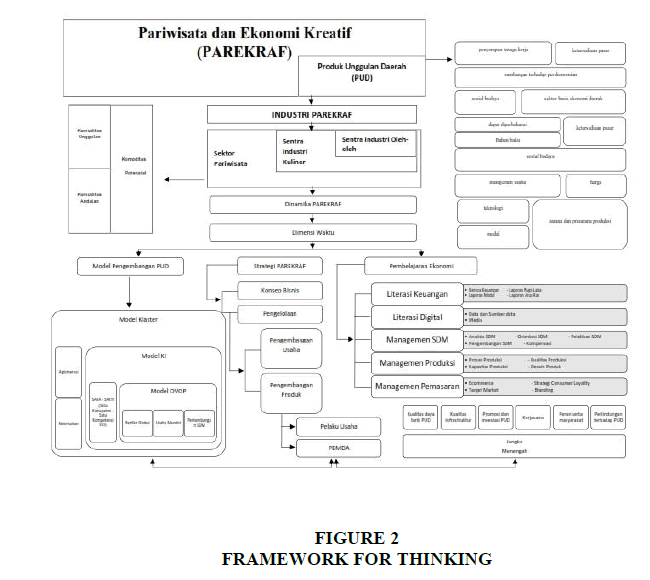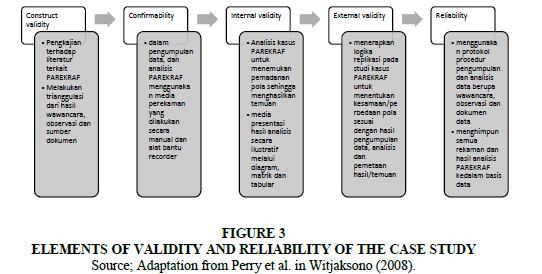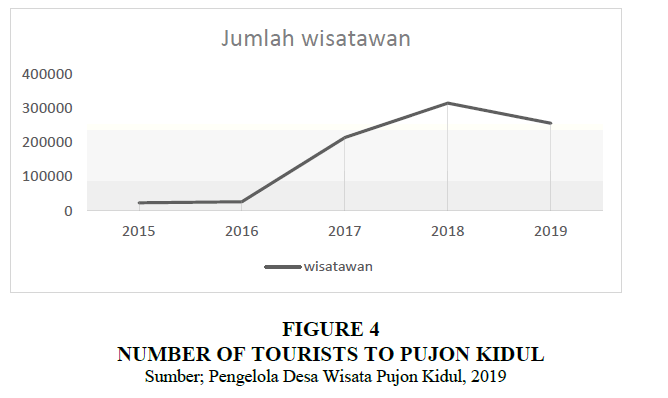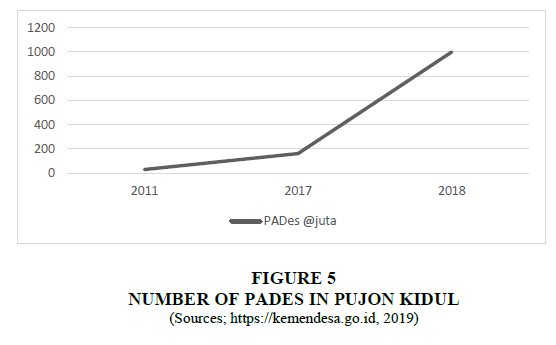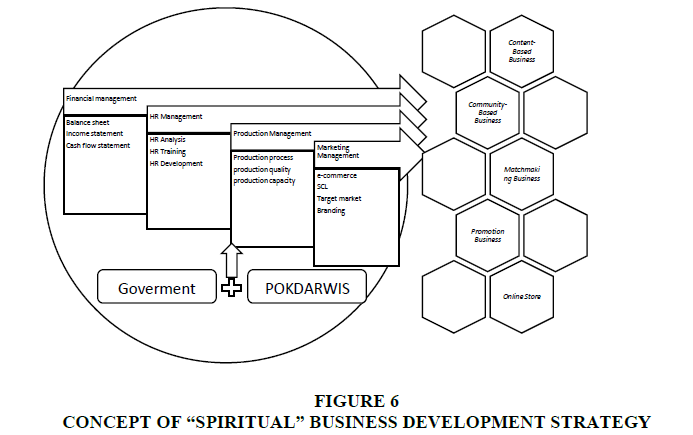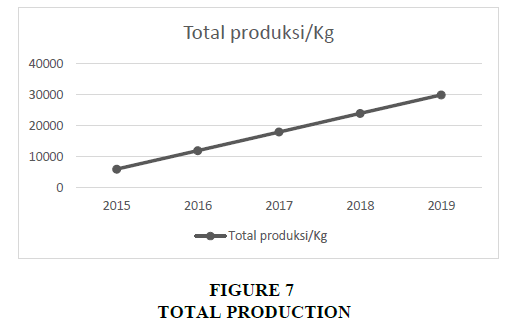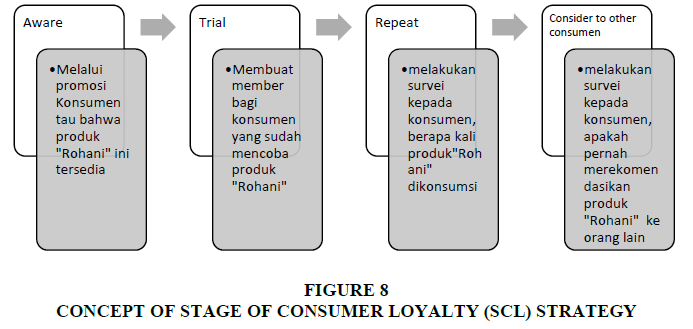Research Article: 2022 Vol: 26 Issue: 1
Community-based potrait tourism and creative economy as regional leading products
Novi Eko Prasetyo, Universitas Negeri Malang
Wahjoedi, Universitas Negeri Malang
Hari Wahyono, Universitas Negeri Malang
Sugeng Hadi Utomo, Universitas Negeri Malang
Citation Information: Prasetyo N E., Wahjoedi., Wahyono H., & Utomo S H. (2022). Community-based potrait tourism and creative economy as regional leading products. International Journal of Entrepreneurship, 26(1), 1-12.
Abstract
The purpose of this study is to analyze how the portrait of the development of the tourism industry and creative economy (PAREKRAF) as a regional superior product (PUD) in Malang. What is the overall picture of PAREKRAF's development from history to its development strategy? The research method used is qualitative research. The subjects studied were the tourist village of Pujon Kidul, Malang regency and typical Malangan souvenirs located in the city of Malang. Qualitative research method with case study analysis. The results showed that the portrait of the development of PAREKRAF began in 2005 until now. The case before the pandemic period, public interest in the tourism sector and the creative economy was still very high, peaking in 2019 before the recession due to the impact of COVID-19.
Keywords
Tourism Industry, Creative Economy
Introduction
The Indonesian government focuses on handling Covid-19 through the “Trisula policy” namely handling health, distributing social safety nets (JPS) and ensuring economic survivability. The phenomenon of the Covid-19 pandemic has caused short-term economic impacts that have caused changes in people's consumption behavior, this kind of condition tends to stagnate people's consumption patterns, another impact is that people's purchasing power drops due to lack of income because many business sectors reduce their activities or close completely. One way for Indonesia's economic recovery is to improve programs or policies in the tourism sector and creative industries. The creative industry as a whole can make an important contribution to the economy of people affected by the financial crisis (Lazzeretti, L. et all. 2018).
The PAREKRAF industry is one of the leading sectors in Malang. Community empowerment in thematic villages should provide benefits for the community in it. The definition of the village according to Ali (1995:438) is as follows:
1. Settlements whose people have low income
2. Village
3. Administratively it is an area under the sub-district
4. Communities in suburban or underdeveloped area
Settlements in Indonesia are divided into 3 criteria; the first criterion is organized settlements, meaning that other facilities and infrastructure are well-organized so that they are easily accessible to the community, then the second criterion is what is called a village, meaning that not all existing houses have access to public facilities and existing infrastructure, and the third criterion Marginal settlements mean settlements that are usually located in suburban areas such as river banks or settlements that stand on state-owned land, this settlement criteria can also be called illegal settlements (Nugroho 2009).
Administratively, urban spatial planning is that an urban village is determined by the activities of citizens in society, meaning that every citizen has rights and responsibilities in advancing his village, becoming a meaningful village for the people in it. So that there are dynamics in accordance with the development of the villag Sumintarsih dan Adrianto Ambar, (2014). The pattern of interaction between residents that influence each other reciprocally can describe the dynamics of villages that exist in an urban area. Urban spatial planning indicators are influenced by several factors, including; environmental and socio-cultural factors (Setiawan, 2010).
Urban existence is influenced by the uniqueness of its villages; the pattern of settlements provides an overview of the dynamics of urban villages. The phenomenon can be seen from the historical portrait as well as the activities and roles of the community in the village. Exploration and innovation of thematic villages is one of the government's solutions in overcoming socio-economic problems. The benefits of thematic villages include:
1. To improve or improve the environmental conditions in which people live
2. Greening the area
3. Increasing forms of community participation
4. Exploration by raising the potential of the area
5. Overcoming the socio-economic problems of the community
People who live in villages have their own characteristics, meaning that they have a very strong social and cultural system, so there needs to be a good planning and urban planning process to accommodate the existence of the village. This illustrates the important role of the village as a form of governance of a city in Indonesia. Community organizations in the village usually function to carry out community activities, administratively managed by the community itself.
Pujon Kidul tourism village is a thematic village that applies the concept of CBT (Community based tourism). The concept of CBT is one of the important aspects in tourism development (Eom, T., & Han, H., 2019). In realizing regional design creations through participatory planning mechanisms, the Government through the Regional Development Planning Agency (Bappeda) organizes a thematic village embodiment program. The total number of thematic villages in Malang is 71, with details of 57 assisted villages and 15 independent villages (Bappeda, 2016). Administratively, Pujon Kidul tourism village has an area of 330 hectares with a population of 4,146 inhabitants.
The activities of the Pujon Kidul community are still dominated by agriculture and animal husbandry, although there are still many natural resources that have not been explored, the government's role is not only to promote CBT as a form of regional development but also to encourage the community to have the initiative to develop and implement policies designed to encourage the tourism economy sustainable (Yanes, A. Et all 2019). Community participation in contributing and taking the initiative to develop tourist villages is the key to regulatory policies that will be set by the government (Zielinski, S.2020).
Pujon Village has a BUMDes Sumber Sejahtera with several business units, including; HIPPAM (Drinking Water User Population Association), rice field café, agricultural education, integrated TPS and agriculture, which aims to shelter or serve as a forum for rural communities to develop the potential of natural resources, human resources and build a system that can drive the economy village. CBT must also preserve the environment and become a source of income for the community by considering socio-economic aspects (Mtapuri, O., & Giampiccoli, A. 2019). CBT is influenced by three dimensions; 1) community participation, 2) government collaboration with the community, 3) the results/benefits obtained by the community (Mayaka, M. et all. 2019, Lee, T. H., & Jan, F. H. 2019).
Creative industries in Indonesia are divided into 16 sub-sectors including culinary, fashion, craft, TV and radio, publishing, architecture, application and games developer, advertising, music, photography, film, animation, video, performing arts, product design, fine arts, design. Interior and visual communication design. To grow and develop the creative industry, it is necessary to improve the competence of human resources (human resources) and preserve culture in order to promote regional potential (Agustina, Y. et all 2020). Malang city is famous for its culinary which one of the regional superior products is. Tourists who visit the city of Malang either from outside the city or abroad choose Malangan culinary specialties as souvenirs.
The typical Malang souvenirs that are most in demand are processed products such as snacks such as tempeh chips, the Sanan tempe chips industry which was pioneered by Mr. Rohani who was given the brand “ROHANI” addressed at Jalan Sanan no. 125 Malang, this product has become a prima donna in the city of Malang. . This is inseparable from government policies that continue to encourage regional culinary industry development strategies. The policies that have been made in addition to providing benefits for industrial clusters are also a framework for developing regional innovation ecosystems (Zandiatashbar, A. et all 2019). The government in terms of making policies must consider the needs of the region, with the fulfillment of the needs of an area will make the area develop quickly so that it can be glimpsed by skilled workers, companies, investors, tourists, etc. (Markusen, A. Et all., 2008, Taylor, C. 2015).
Method
The approach used in this research is qualitative. The method used to explore in qualitative research is through information on a number of individuals or groups of resource persons who are considered to understand social and humanitarian problems (Creswell 2012). Qualitative research methods can be carried out with various approaches including: ethnography, case studies, phenomenology, narrative and grounded-theory. Each of these research approaches incorporates the main characteristics of qualitative research (Creswell 2015). This qualitative research is specifically more directed at the use of the case study method.
This model has several focuses, including biography, phenomenology, theory, ethnography and case study focus. The five methods have different processes adapted to the background in a study. This research uses a case study approach to see a comprehensive picture of the dynamics of the development of the tourism industry and the creative economy (PAREKRAF). Characteristics of existing case studies include Figure 1:
1. Identification of problems in PAREKRAF.
2. This case is based on the same place and time setting.
3. Sources of information come from data collection, both from informants and quantitative data used to provide a clear and detailed description of the events.
The picture above is the framework of PAREKRAF's thinking as a regional superior product, the exploration form of this research is based on the time dimension based on data collection from various sources of information. The study of the PAREKRAF case was obtained from an event based on the time dimension. Based on indexical and non-indexical components, the steps are as follows in Figure 2, Table 1:
| Table 1 Research Steps |
|
|---|---|
| Stages | Activity |
| Step 1 |
|
| Step 2 |
|
| Step 3 |
|
| Step 4 | Analysis of the results of step 2 (b); knowledge of what is in opinions, concepts, theoretical reflections and separate between things that are reasonable / unnatural. |
| Step 5 | Assemble and group the individual “trajectories” from step 3. |
| Step 6 | Compare and group: similar “trajectory” into collective “trajectory”. |
| Step 7 | Further analysis of steps (4,6); to be “operating theory” |
| Source: Adapted from Jovchelovitch & Bauer in Witjaksono (2008). | |
The validity and reliability of research data can be done with the following elements of the stages in Figure 3 ;
Figure 3:Elements Of Validity And Reliability Of The Case Study
Source; Adaptation From Perry et al. In Witjaksono (2008).
The stages of research carried out in this study are as follows:
1. Determine the focus of the research study. This is done by looking for information on the case under study
2. Basic theory, collecting relevant study materials and some previous research
3. Determine the case as a study material sourced from informants and data sources
4. Field data collection
5. Data processing through coding, categorizing, comparing and discussing
6. Formulate research results, by interpreting and integrating
Results and Discussion
Tourism Village Development
Administratively, the Pujon Kidul tourist village is located in the Malang district with a highland area that has hilly and mountainous characteristics. The area of Pujon Kidul Village is 323,159 Ha, divided for residential, agricultural, plantation and livestock land, Table 2.
| Table 2 Land Use In The Tourist Village Of Pujon Kidul |
||
|---|---|---|
| No. | Description | Large |
| 1 | Housing and Yard | 45.807 Ha |
| 2 | Ricefield | 84.742 Ha |
| 3 | Green field | 87.102 Ha |
| 4 | Plantation | 240 Ha |
| 5 | Fields | 0,5 Ha |
| 6 | Village Road | 8 Ha |
| 7 | Protected forest | 227 Ha |
| 8 | Production forest | 578 Ha |
| (Source: pujonkidul.desa.id/condition-demographic/accessed June 20, 2021) | ||
The total population of Pujon Kidul Village is 4,470 people, most of whom work in the field; services, trade, animal husbandry, plantations, fields, agriculture and state apparatus, Table 3.
| Table 3 Details Of The Population Of The Village Of Pujon Kidul |
||
|---|---|---|
| No | Resident Entity Description | Total |
| 1 | Male | 2,284 souls |
| 2 | Female | 2.186 souls |
| 3 | Head of family | 1.345 souls |
| 4 | Work force (Age 15-55 years) | 1.875 souls |
| 5 | Total population | 4.470 souls |
| (Source: pujonkidul.desa.id/condition-demographic/) | ||
Some of the existing natural destinations include waterfalls “source pitu” agriculture and breeders, the cultural sector is one of the tourist attractions in Pujon Kidul, some of the arts that exist include percussion, saduk, Kuda Lumping etc. Easy access for tourists because it is not far from Batu city and is still within the scope of leading tourist destinations in Batu City. Pujon Kidul tourism village has very good tourism potential including; Natural tourism Sumber Pitu, fruit and vegetable picking agro-tourism, sandukan art outbound tourism, Kuda Lumping art, dairy processing center, cattle education tour, rice field café etc. The number of tourist visits to Pujon Kidul is increasing from year to year.
Based on BPS data, tourists visiting Malang Raya experience ups and downs, this is evidenced by the data on the number of visitors, both domestic and foreign, as follows in Figure 4, Table 4, 5;
| Table 4 Number Of Domestic Tourists |
||||||
|---|---|---|---|---|---|---|
| Mounth | Number of Domestic Tourists in Malang City (Persons) | |||||
| 2014 | 2015 | 2016 | 2017 | 2018 | 2019 | |
| January | 188079 | 282715 | 267696 | 311317 | 449551 | 481014 |
| February | 167038 | 185504 | 246255 | 292508 | 367758 | 393514 |
| March | 169263 | 202342 | 248123 | 305669 | 329974 | 353076 |
| April | 167202 | 194389 | 257305 | 316402 | 302535 | 323707 |
| May | 174966 | 203710 | 243187 | 324308 | 278870 | 298398 |
| June | 206944 | 247410 | 320867 | 407008 | 355753 | 428816 |
| July | 221635 | 271825 | 385763 | 369655 | 575585 | 617108 |
| August | 192876 | 235388 | 353288 | 376665 | 451675 | 478658 |
| September | 213150 | 231498 | 379339 | 478700 | 360055 | 379145 |
| October | 192876 | 253906 | 383522 | 524031 | 352337 | 372445 |
| November | 199020 | 310383 | 406619 | 566657 | 411428 | 435283 |
| December | 330027 | 757652 | 495110 | 63055 | 573865 | 609359 |
| TOTAL | 2423076 | 3376722 | 3987074 | 4335975 | 4809386 | 5170523 |
| Source: Malang City Tourism and Culture Office | ||||||
| Table 5 Number Of Foreign And Domestic Tourists Who Came To Malang Regency In 2010 – 2018 |
|||
|---|---|---|---|
| Years | Foreign Tourist | Domestic Tourist | Total |
| 2010 | 4 187 | 1 938 066 | 1 942 253 |
| 2011 | 9 983 | 2 101 822 | 2 111 805 |
| 2012 | 29 504 | 2 014 105 | 2 043 609 |
| 2013 | 33 226 | 2 517 248 | 2 550 474 |
| 2014 | 80 792 | 3 170 575 | 3 251 367 |
| 2015 | 99 873 | 3 554 609 | 3 654 482 |
| 2016 | 129 663 | 5 719 881 | 5 849 544 |
| 2017 | 108 485 | 6 395 875 | 6 504 360 |
| 2018 | 100 234 | 7 072 124 | 7 172 358 |
| Source: Malang regency tourism and culture office | |||
The development of the Pujon Kidul Tourism Village still has good prospects considering that there are still many tourist destinations that need to be explored, this village has its own characteristics, uniqueness and authenticity of superior products. To increase local revenue (PADes), Pujon Kidul village has formed BUMDes.
The picture above shows the number of PADes from 2011 to 2018, in 2011 the number of PADes was still at 20-30 million per year, this is certainly still far from the expectations of the Village community, considering that the Village also needs to carry out development with a budget requirement of around Rp. billion, therefore in 2014 the Village apparatus and the Community collaborated to design and conduct mapping to form a “Prosperous” BUMDes. The initial good impact after the establishment of BUMDes in 2017 PADes became Rp. 162 million, accompanied by the number of tourists who continued to increase by around 3000 to 5000 visitors per day, in 2018 PADes had reached more than Rp. 1 billion. With the continued increase in PADes, it is hoped that the level of community welfare will increase and be accompanied by village development that continues to grow to meet community facilities and needs Figure 5.
The Development of the Creative Economy Industry
The culinary industry is one of the leading products in the city of Malang, the large number of tourists visiting the city of Malang, makes the culinary industry, especially souvenirs in the form of snacks, experiencing very rapid development. Starting from Mrs. Lilik's thoughts in 2005, she began experimenting by using leftover tempeh from the market to be processed into snacks in the form of tempe chips, which were given the brand name “ROHANI”. This industry is located at Jalan Sanan no. 125, Blimbing sub-district, Purwantoro village, Malang City. This has an area of about 98 m2.
Initially “Rohani” products were produced in small quantities and then sold in traditional markets, but after a few months there was a lot of demand for “Rohani” products in the form of tempeh chips from outside the city. Since then the demand has been increasing every year, but after the price of raw materials has increased, the price of the product has also increased so that “Spiritual” has reduced the amount of its production. To expand the “Spiritual” market segment, try to establish cooperation with several restaurants, government and community groups.
Since then, the spiritual tempe chip product has become known and in demand by many people and “Rohani” has started to open a new outlet. With the opening of the outlet, it is easier for spiritual people to offer their products. Many agencies have started to offer offers to participate in mentoring, small business training and various exhibition events.
In early 2015 “Rohani” began to develop its new place of business in the form of a 2nd outlet located on Jalan Tumenggung Suryo No. 90 Malang, which is not too far from the initial place of business. So that customers can easily find “Rohani” tempe chips at the Sanan souvenir center. “Rohani” tempe chips are increasingly known and in demand by many people, both local people in Malang and outside the region, finally Spiritual decided to expand its production site on Jalan Satsui Tubun 1 Kebonsari Malang. This production place is quite far from the sales outlet, but this is an advantage because this production place is quite spacious and can accommodate a lot of production capacity.
The business development strategy carried out by “Rohani” through the concept of digital management, where financial management, HR management, production management and marketing management are in direct synergy with the digital marketing concept, including; Content-Based Business, Community-Based Business, Matchmaking Business, Promotion Business and Online Store. To strengthen its business, “Rohani” also collaborates with the government and tourism awareness groups (POKDARWIS) to reach a wider market segment, not only local consumers but also national and international consumers.
The picture above is the concept of a business strategy developed by “Rohani”, some of the indicators that have become the main points include Figure 6;
1. “Spiritual” Financial Management; Financial reports are carried out every certain time frame, through the financial balance sheet, profit/loss report, and cash flow statement. The average “Spiritual” turnover can reach 100 million/month, according to the amount of production. Financial management is a process that regulates activities or all activities related to financial management which includes planning, decision making, financial analysis and financial control (Brigham and Houston, 2012).
2. Human resource management (HR) “Spiritual” ; HR management carried out by “Spiritual” includes; 1) HR analysis where there are certain conditions that have been set “Spiritually” to become an employee, 2) training before being accepted as a permanent employee, the training is carried out for 3 months of work. 3) employee development by participating in trainings held by experts, government or community groups in accordance with their respective fields. HR quality refers to; knowledge, skills and effectiveness. Improving the quality of human resources can be honed through; formal education, job training, work experience (Ruhana, 2012).
3. “Spiritual” Production Management; The flagship product of “Rohani” is tempeh chips, this product is both a characteristic and an innovation developed. several factors that are considered in producing goods, among others; consumer needs, competitors, target market and consumer access to products. The “Rohani” home industry in 2019 produced approximately 2.5 tons of tempeh chips per month, the production of “Rohani” experienced an increase from 2015 to 2019.
Marketing strategies carried out by business actors to achieve various targets or goals, one of which is marketing through e-commerce. e-commerce benefits include; increased productivity, faster order cycles, lower production costs, and lower total cost of ownership (A. Shimp, 2000) Figure 7. Factors that often hinder the development of e-commerce include; limited access to technology, lack of internal trust, lack of information sharing across the company, intolerance to failure, and inability to cope with rapid change (Tan.j. 2007).
1. Marketing Management; This stage of consumer loyalty (SCL) strategy is usually applied “Spiritually” to track and determine the target market. So that the goods produced both in terms of quality, quantity, and product design are in accordance with the target market.
2. Content-Based Business; the theme / topic used by “Spirituality” to increase reting or consumer trust by creating interesting content according to topics that are trending in society. The more creative and innovative the content, the higher the rating.
3. Community-Based Business is a discussion forum in Facebook groups and POKDARWIS which is used as a forum to find inspiration and determine topics around interesting content.
4. Matchmaking Business in the form of Facebook and Instagram to facilitate communication with consumers.
5. Promotion Business “Spiritual” which is carried out to acquire new customers, and can increase consumer loyalty, by collaborating with the government, private parties and the tourism sector.
6. Online Store, a platform for selling products through Facebook, Instagram, and several start-ups that are currently developing.
As the flagship product of the city of Malang, “Rohani” Tempe Chips always work together to develop tempe chip products in collaboration with other producers to create tour packages and tourism activities organized by POKDARWIS Figure 8.
Conclusion
The portrait of the development of the tourism industry and the creative economy (PAREKRAF) began in 2005 where the tourism industry was still in the development process stage, five years later the response and enthusiasm of the community emerged in developing the industry until finally a business entity was created, namely BUMDes which aims to protect or serve as a forum for village communities to develop the potential of natural resources, human resources and build a system that can move the village economy so as to increase PADes. This condition is followed by industries in the creative industry sector, namely Malangan typical souvenirs (Rohani tempe chips) 5 tons/month.
References
Shimp, T. (2000). Periklanan Promosi: Aspek Tambahan Komunikasi Pemasaran Terpadu (Vol. 5). Jakarta: Erlangga.
Bappeda, (2016). Lomba Perancangan Kampung Tematik Mulai Disosialisasikan. Diakses 10 Agustus 2016.
Brigham dan Houston, (2012), Dasar-Dasar Manajemen Keuangan, Buku 1, Salemba Empat, Jakarta.
Creswell. J.W. (1998). Qualitative Inquiry And Research Design: Choosing Among Five Traditions. London: SAGE Publications.
Creswell. J.W. (2012). Research Design; Pendekatan Kualitatif, Kuantitatif dan Mixed. Pustaka Pelajar. Yogyakarta.
Creswell, John W. (2015). Penelitian Kualitatif & Desain Riset. Yogyakarta : Pustaka Pelajar.
Nugroho, A.C. (2009). Kampung Kota Sebagai Sebuah Titik Tolak dalam Membentuk Urbanitas dan Ruang Kota Berkelanjutan. Jurnal Rekayasa. Vol. 13 No.3 (210-218).
Ruhana, (2012), pengembangan kualitas sumber daya manusia vs daya saing global.
Setiawan, B. (2010). Kampung Kota dan Kota Kampung: Tantangan Perencanaan Kota di Indonesia. Pidato pengukuhan Jabatan Guru Besar dalam Ilmu Perencanaan Kota UGM, tgl 28 Oktober di Yogyakarta.
Sumintarsih, dan Adrianto Ambar, (2014). Dinamika Kampung Kota Prawirotaman dalam Perspektif Sejarah dan Budaya. Yogyakarta: Balai Pelestarian Nilai Budaya (BPNB).
